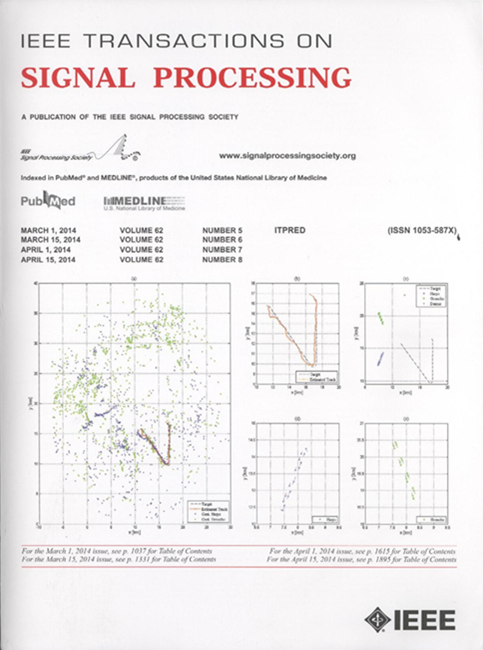Block Tensor Ring Decomposition: Theory and Application
IF 5.8
2区 工程技术
Q1 ENGINEERING, ELECTRICAL & ELECTRONIC
引用次数: 0
Abstract
Recently, tensor decompositions have received significant attention for processing multi-dimensional signals, especially representative by the block-term decomposition (BTD) family and the tensor network decomposition (TND) family. However, these two families have long been isolated from each other, with their respective wisdom neither inspiring nor benefiting each other. To address this dilemma, we propose a block tensor ring decomposition (BTRD), which decomposes an块张量环分解:理论与应用
近年来,张量分解在处理多维信号方面受到了广泛关注,以块项分解(BTD)族和张量网络分解(TND)族为代表。然而,这两个家族长期以来彼此隔绝,各自的智慧既不相互启发,也不相互受益。为了解决这个难题,我们提出了一个块张量环分解(BTRD),它将一个$N$th阶张量分解为基本向量因子与$(N-1)$th阶系数张量之间的外积和,这些张量进一步用张量环表示。BTRD的好处是它可以更好地探索张量的外部多分量结构和每个分量的内部张量拓扑。为了检验所提出的BTRD的潜力,我们将其应用于一个低秩张量补全模型作为代表性任务,并证明了一个理论泛化误差界,这为支持所提出的模型在高阶张量上的优势提供了理论视角。为了解决由此产生的优化问题,我们采用了一种有效的基于邻域交替极小化(PAM)的算法,该算法具有理论收敛性保证。在真实世界信号数据(彩色视频和光场图像)上的大量实验结果表明,所提出的模型与最先进的基线模型相比具有优越性。
本文章由计算机程序翻译,如有差异,请以英文原文为准。
求助全文
约1分钟内获得全文
求助全文
来源期刊

IEEE Transactions on Signal Processing
工程技术-工程:电子与电气
CiteScore
11.20
自引率
9.30%
发文量
310
审稿时长
3.0 months
期刊介绍:
The IEEE Transactions on Signal Processing covers novel theory, algorithms, performance analyses and applications of techniques for the processing, understanding, learning, retrieval, mining, and extraction of information from signals. The term “signal” includes, among others, audio, video, speech, image, communication, geophysical, sonar, radar, medical and musical signals. Examples of topics of interest include, but are not limited to, information processing and the theory and application of filtering, coding, transmitting, estimating, detecting, analyzing, recognizing, synthesizing, recording, and reproducing signals.
 求助内容:
求助内容: 应助结果提醒方式:
应助结果提醒方式:


